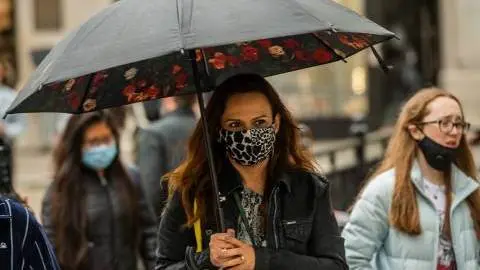A second eurozone wave should be a wake-up call for policymakers
The rise of new Covid-19 cases has led to concerns about an early end to the rebound of the eurozone economy. While we don’t see much of an impact in terms of mobility data just yet, the risk of a double-dip recession in 4Q should not be underestimated
Despite the second-wave, 3Q GDP growth will be whopper
In this fast-developing crisis, traditional economic data is inevitably always a bit behind the curve.
While concerns about growth are resurfacing, data releases on the summer months still show strong rebound effects. Thanks to base effects from the rebound in May, June and July, 3Q growth in industrial production, retail sales, new car registrations and exports will be massive.
Taking available data for July and August, where possible and leaving that stable for the rest of the quarter yields quarterly growth of 10.9% for retail sales, 14.6% for industrial production, 16.7% for exports in goods and a whopping 106.9% for new car registrations.
Our forecast for 3Q GDP growth in the eurozone is therefore around 10% quarter-on-quarter.
Brightest before dusk?
Looking beyond the third quarter, recent confidence indicators have fuelled fears of a double-dip recession.
Eurozone services PMI even dropped below 50, indicating that the sector is experiencing contraction. While we believe that this may overstate the decline in September and that moderately paced growth is more realistic, this is concerning.
According to the survey, the decline was related to the surge in Covid-19 cases impacting business and this should come as an early warning sign for policymakers. While the reversal of reopening measures has thus far been limited, it is worrying that businesses are already noticing a decline in activity.
Google data points to a small tick down in activity towards the end of September
Latest Google mobility data also shows some small indications of a turnaround in mobility, possibly on the back of the increase in new infections and new local lockdowns.
From mid-August to mid-September, there has been a steady increase in Covid-19 cases, notably in most large eurozone economies, consistent with a continued recovery in activity. However, from mid-to-late September, cautious declines in mobility can be seen. The impact is still small, even though cases have been surging for quite some time. It has to be said that new restrictive measures have been far less impactful than during the first wave, but still more of an effect was to be expected.
We think that the recent decline in mobility together with concerns in the services sector indicated by the PMIs should act as a wakeup call for policymakers that it’s not necessarily all smooth sailing from here.
Mobility data has fallen slightly in the second half of September

Concerns about a double-dip are more for 4Q than 3Q
The boost of reopening economies has already made clear that GDP growth in 3Q will be massive, but this could mask another dip or at least a slowing of economic activity.
Similar or even stricter social distancing measures, combined with the winter season could actually suppress consumption and all kinds of leisure activities. Dealing with Covid-19 out in the open in the summer months was much easier than it will be indoors. Also, some sectors have started to show the first structural effects from the crisis as job redundancies are announced.
There is a possibility that the eurozone recovery could come to an abrupt halt towards the end of the year. It will take a vaccine before the recovery can be fully sustainable. And even then, the longer-term impact from social distancing as well as the structural transition in some sectors (which Covid-19 didn't start but did accelerate) is likely to continue weighing on growth in 2021 and beyond.
This publication has been prepared by ING solely for information purposes irrespective of a particular user's means, financial situation or investment objectives. The information does not constitute investment recommendation, and nor is it investment, legal or tax advice or an offer or solicitation to purchase or sell any financial instrument. Read more
Download
Download article
9 October 2020
October Economic Monthly: Winter is coming This bundle contains 12 Articles
